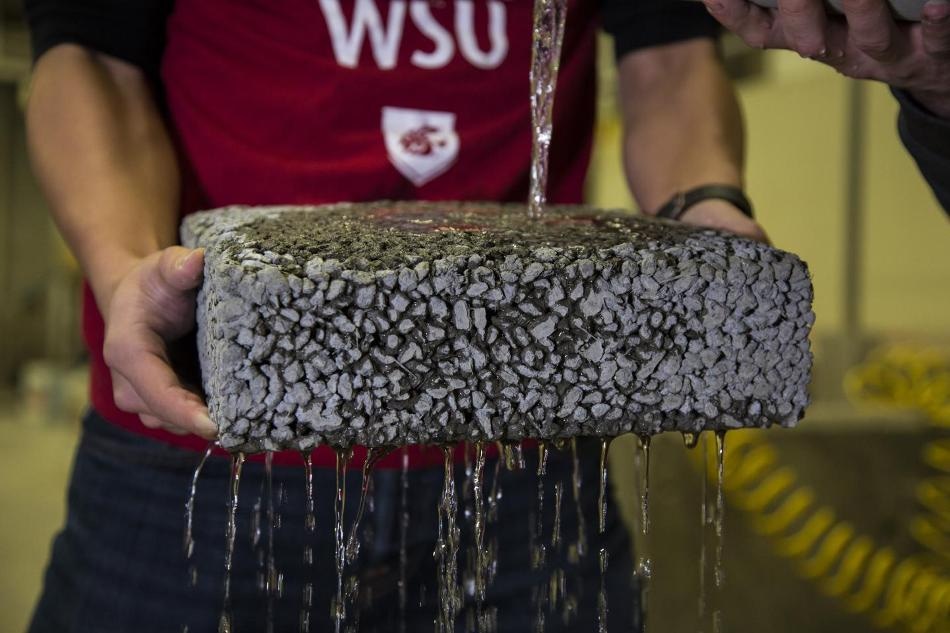Mar 1 2018
 Water runs through Washington State University pervious pavement. (Credit: Washington State University)
Water runs through Washington State University pervious pavement. (Credit: Washington State University)
Researchers from the Washington State University are attempting to solve a high-tech waste problem while addressing the environmental challenge of storm water run-off.
The researchers are resolving the issue by strengthening permeable pavements by incorporating waste carbon fiber composite materials. The researchers describe their recycling technique in the March issue of the Journal of Materials in Civil Engineering. The technique does not require the use of a lot of energy or chemicals, which is an important factor for recycling waste materials.
Traditional vs. Pervious
In contrast to the impermeable pavement used for most parking lots and roads, the pervious concrete allows rainwater to easily drain and seep into the ground below. Due to concerns about flooding in urban areas and requirements for controlling the storm water run-off, a number of cities have started using the pervious concrete in low-traffic streets and parking lots. As it is very porous in nature, it is not as durable as the traditional concrete used on major roads.
Recycling Carbon Fiber
Carbon fiber composites have become progressively more popular with many industries. Super light and robust, the material is suitable for use from airplane wings to cars and wind turbines. With the market growing about 10% annually, industries are yet to find ways to easily recycle their waste, which is about 30% of the material used in manufacture.
The research team was led by Karl Englund, Associate Research Professor and Somayeh Nassiri, Assistant Professor with the Department of Civil and Environmental Engineering. They received carbon fiber composite scrap from Boeing Manufacturing Facilities to add into their pervious concrete mix. For refining the composite pieces to the ideal sizes and shapes, mechanical milling was used. The added material significantly increased both the strength and durability of pervious concrete.
In terms of bending strength, we got really good results -- as high as traditional concrete, and it still drains really quickly.
Somayeh Nassiri, Assistant Professor with the Department of Civil and Environmental Engineering, Washington State University
Milling vs. Heat or Chemicals
The researchers used cheap milling methods as alternatives to heat or chemicals for the creation of a reinforcing element from the waste carbon fiber composites. They maintained and employed the original strength of the composites by retaining them in their cured composite form. The mix also needed more composite material, which was suitable for waste producers.
You're already taking waste -- you can't add a bunch of money to garbage and get a product. The key is to minimize the energy and to keep costs down.
Karl Englund, Associate Research Professor, Washington State University
For providing uniform strength, the composite materials were dispersed throughout the pavement mix.
Testing and Mainstreaming
The researchers have demonstrated that their material works in the laboratory. They are now conducting real-world tests on pavement applications. They are also partnering with industry to develop a supply chain.
In the lab this works to increase permeable pavement's durability and strength. The next step is to find out how to make it mainstream and widespread.
Somayeh Nassiri, Assistant Professor with the Department of Civil and Environmental Engineering, Washington State University
The partnership with Boeing helped the research.